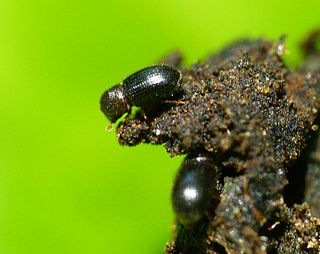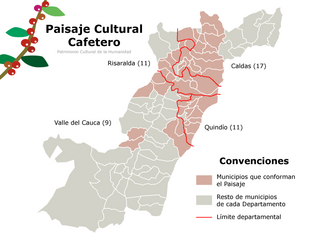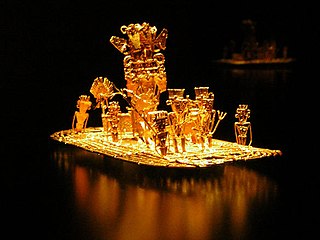 W
WAgriculture in Colombia refers to all agricultural activities, essential to food, feed, and fiber production, including all techniques for raising and processing livestock within the Republic of Colombia. Plant cultivation and livestock production have continuously abandoned subsistence agricultural practices in favour of technological farming resulting in cash crops which contribute to the economy of Colombia. The Colombian agricultural production has significant gaps in domestic and/or international human and animal sustenance needs.
 W
WAlibertia patinoi, commonly known as borojó, is a small (2-5m), dioecious tropical rainforest tree, one of the few edible fruit bearing species in the Rubiaceae family. Borojó, native to the world's wettest lowlands, grows in the Chocó Department of northwestern Colombia and in the Esmeraldas Province of northwestern Ecuador.
 W
WThe Cairns Group is an interest group of 20 agricultural exporting countries, composed of Argentina, Australia, Bolivia, Brazil, Canada, Chile, Colombia, Costa Rica, Guatemala, Indonesia, Malaysia, New Zealand, Pakistan, Paraguay, Peru, the Philippines, South Africa, Thailand, Uruguay, and Vietnam.
 W
WThe coffee borer beetle or coffee berry borer is a small beetle native to Africa. It is among the most harmful pests to coffee crops across the world where coffee is cultivated. Spanish common names of the insect include barrenador del café, gorgojo del café, and broca del café.
 W
WCoffee production in Colombia has a reputation as producing mild, well-balanced coffee beans. Colombia's average annual coffee production of 11.5 million bags is the third total highest in the world, after Brazil and Vietnam, though highest in terms of the arabica bean. The beans are exported to United States, Germany, France, Japan, and Italy. Most coffee is grown in the Colombian coffee growing axis region, while other regions focus on quality instead of volumes, such as Sierra Nevada de Santa Marta. In 2007, the European Union granted Colombian coffee a protected designation of origin status. In 2011, UNESCO declared the "Coffee Cultural Landscape" of Colombia, a World Heritage site.
 W
WThe Colombian coffee Region, also known as the Coffee Triangle is a part of the Colombian Paisa region in the rural area of Colombia. It is famous for growing and producing the majority of Colombian coffee, considered by many to be the best coffee in the world. There are four departments in the area: Caldas, Quindío, Risaralda and Tolima. The most visited cities are Manizales, Armenia, Pereira, and Ibagué.
 W
WThe Ministry of Agriculture and Rural Development is the national executive ministry of the Government of Colombia in charge of the management and oversight of the rural development and agriculture of Colombia.
 W
WThe Muisca agriculture describes the agriculture of the Muisca, the advanced civilisation that was present in the times before the Spanish conquest on the high plateau in the Colombian Andes; the Altiplano Cundiboyacense. The Muisca were a predominantly agricultural society with small-scale farmfields, part of more extensive terrains. To diversify their diet, they traded mantles, gold, emeralds and salt for fruits, vegetables, coca, yopo and cotton cultivated in lower altitude warmer terrains populated by their neighbours, the Muzo, Panche, Guane, Guayupe, Lache, Sutagao and U'wa. Trade of products grown farther away happened with the Calima, Pijao and Caribbean coastal communities around the Sierra Nevada de Santa Marta.
Panela or rapadura is unrefined whole cane sugar, typical of Central, and of Latin America in general, which is a solid form of sucrose derived from the boiling and evaporation of sugarcane juice. Panela is known by other names in Latin America, such as chancaca in Chile and Peru, piloncillo in Mexico. The name piloncillo means little loaf, because of the traditional shape in which this smoky, caramelly and earthy sugar is produced. It has far more flavor than brown sugar, which is generally just white sugar with a small amount of molasses added back to it. Just like brown sugar, there are two varieties of piloncillo; one is lighter (blanco) and one darker (oscuro). Unrefined, it is commonly used in Mexico, where it has been around for at least 500 years. Made from crushed sugar cane, the juice is collected, boiled and poured into molds, where it hardens into blocks. Panela is also known as rapadura in Portuguese. Elsewhere in the world, the word jaggery describes a similar foodstuff. Both of them are considered non-centrifugal cane sugars.